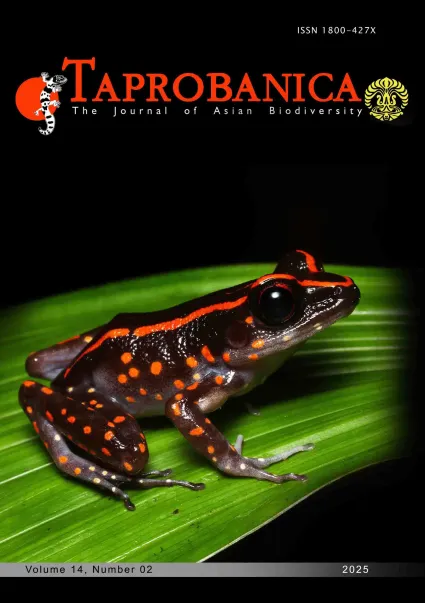

v14i2.376
Volume 14 | Number 2 | November 2025
Major Article
eISSN: 1800-427X (online)
DOI:10.47605/tapro.v14i2.376
Submitted date: 30 January 2025
Accepted date: 22 October 2025
Published date: 18 November 2025
Pp. 236–244.
BUTTERFLY INDICATORS AND ASSEMBLAGE PATTERNS IN URBANIZED GREATER JAKARTA
Nurul L. Winarni*, N. Nuruliawati, Achmad R. Junaid & Bhisma G. Anugra
*Corresponding author. E-mail: n.winarni@sci.ui.ac.id
Abstract
Urban areas dominated by man-made structures can still provide habitats for butterflies. To assess urban butterfly diversity, KupuKita—a citizen science platform—was launched in 2021 to monitor butterflies across the Greater Jakarta region (Jakarta, Bogor, Depok, Tangerang, and Bekasi). Using a simple geotagged form with visual species lists from Papilionidae, Pieridae, and Nymphalidae families, data were collected from four habitat types: home gardens, green spaces, parks, and roadsides. Between March 2021 and November 2022, 50 species were recorded, with Appias olferna, Leptosia nina, Eurema sp., and Hypolimnas bolina being the most common. Cluster analysis based on habitat composition and vegetation identified three ecological groups—urban generalists, urban-tolerant, and rare species. Indicator species were recognized for green spaces and roads, but none for home gardens due to vegetation variability. These findings demonstrate the potential of citizen science for evaluating urbanization effects on butterfly communities.
Section Editor: Tim New
DOI:10.47605/tapro.v14i2.376
Submitted date: 30 January 2025
Accepted date: 22 October 2025
Published date: 18 November 2025
Pp. 236–244.
BUTTERFLY INDICATORS AND ASSEMBLAGE PATTERNS IN URBANIZED GREATER JAKARTA
Nurul L. Winarni*, N. Nuruliawati, Achmad R. Junaid & Bhisma G. Anugra
*Corresponding author. E-mail: n.winarni@sci.ui.ac.id
Abstract
Urban areas dominated by man-made structures can still provide habitats for butterflies. To assess urban butterfly diversity, KupuKita—a citizen science platform—was launched in 2021 to monitor butterflies across the Greater Jakarta region (Jakarta, Bogor, Depok, Tangerang, and Bekasi). Using a simple geotagged form with visual species lists from Papilionidae, Pieridae, and Nymphalidae families, data were collected from four habitat types: home gardens, green spaces, parks, and roadsides. Between March 2021 and November 2022, 50 species were recorded, with Appias olferna, Leptosia nina, Eurema sp., and Hypolimnas bolina being the most common. Cluster analysis based on habitat composition and vegetation identified three ecological groups—urban generalists, urban-tolerant, and rare species. Indicator species were recognized for green spaces and roads, but none for home gardens due to vegetation variability. These findings demonstrate the potential of citizen science for evaluating urbanization effects on butterfly communities.
Section Editor: Tim New
- List of Articles & Contents





